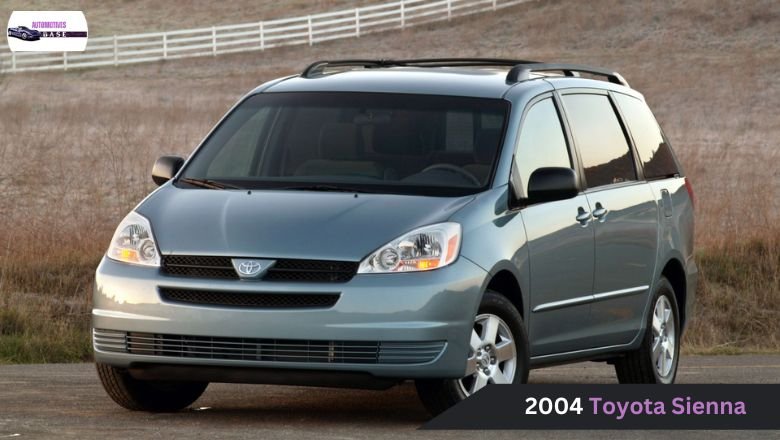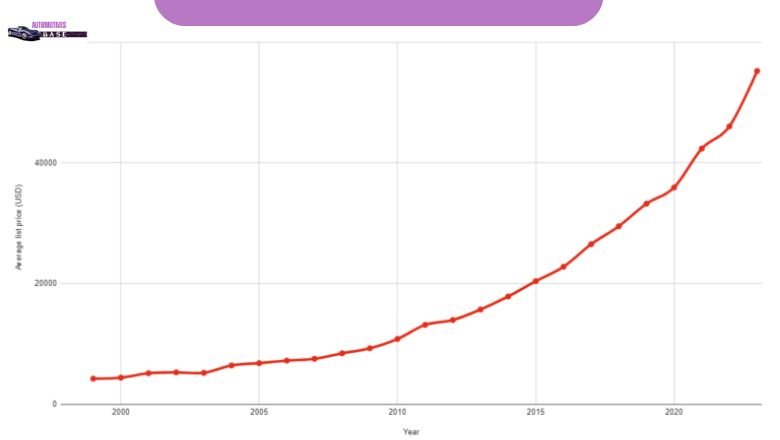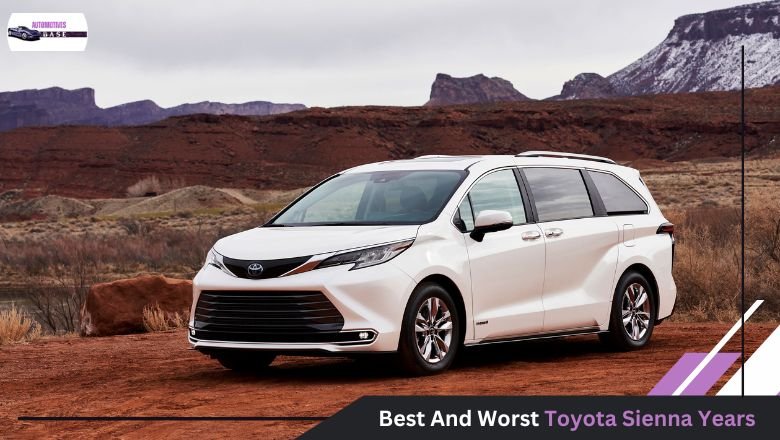With a wide array of model years to choose from, each boasting its own blend of features and quirks, finding the ideal fit can feel like navigating a maze. We’ll unravel the mysteries behind the best and worst Toyota Sienna years, shedding light on which models shine brightest and which ones may leave you wanting more.
Toyota Sienna Generations
The Toyota Sienna has a reputation for its spacious interior and excellent safety features, making it a popular choice for families. The various generations of the Sienna have their own strengths and weaknesses, ranging from the best to the worst model years. Understanding these differences can help you make an informed decision when purchasing a used Sienna.
Among the best Toyota Sienna years are those known for reliability, innovative features, and solid performance. There are some model years that may have had more issues or drawbacks compared to others. It’s important to research and consider factors such as maintenance costs, fuel efficiency, technology offerings, and overall reputation before choosing a specific year.
| Generations | Years |
|---|---|
| Toyota Sienna (1st generation, XL10) | 1998-2003 |
| Toyota Sienna (2nd generation, XL20) | 2004-2010 |
| Toyota Sienna (3rd generation, XL30) | 2011-2020 |
| Toyota Sienna (4th generation, XL40) | 2021-Present |
Neutral years for the Toyota Sienna fall in between the best and worst model years in terms of reliability and owner satisfaction. These years may not exhibit outstanding performance or significant issues, often striking a balance between positive and negative aspects. Owners of neutral years may find them to be satisfactory but not exceptional in any particular aspect.
They are unlikely to experience major problems or remarkable benefits compared to other model years. Neutral years could be considered average across the board, providing a standard driving experience without standout features or drawbacks.
Toyota Sienna Best, Neutral, and Worst Years
Determining the best and worst years for the Toyota Sienna involves evaluating several key factors. These include owner-reported reliability, annual maintenance costs, safety ratings, Consumer Reports scores, NHTSA recalls, and owner satisfaction ratings from various sources such as Edmunds, JD Power, Kelley Blue Book, and Vehicle History.
The number of recalls reported by NHTSA can negatively impact a vehicle’s reliability ranking. Higher recall counts result in lower overall scores for the Sienna in particular years. It is important to consider all these factors when assessing the performance and desirability of a specific model year of the Toyota Sienna.
Best And Worst Toyota Sienna Years, 1st Generation (1998–2003)
The Toyota Sienna 1st generation, spanning from 1998 to 2003, marked Toyota’s entry into the competitive minivan market. In terms of reliability and overall satisfaction, the best years for the Sienna are often considered to be 1999 and 2002. These models were praised for their spacious interiors, smooth ride quality, and durable engines.

The worst year for the Toyota Sienna 1st generation is commonly regarded as 2000. This model year was plagued by various issues, such as transmission problems and electrical faults. Owners reported frequent repairs and maintenance expenses associated with the 2000 Sienna.
The Best Years: 2000, 2001, 2002
The Toyota Sienna had its finest years from 2000 to 2002, earning the title of the best in its category. These models boasted a dependable 3.0L V6 engine and advanced safety features, setting them apart from the rest. Consumers praised the comfort and quality of the driving experience, with few reported issues during these model years.
Among the three, the 2002 Sienna stood out as it received top ratings in crash tests – solidifying its reputation for safety. It’s important to note that some other years in the first generation did not fare as well when it came to reliability or performance. From 2000 to 2002, the Toyota Sienna showcased its best qualities and set a high standard for minivans in its class.
The Neutral Years: 1998, 1999
The Neutral Years of 1998 and 1999 marked the early phase of Toyota’s foray into the minivan market with the Sienna. During this time, Toyota focused on establishing a reputation for reliability and safety in their vehicles. Lacking some advanced features found in later models, the Sienna’s from these years were still considered dependable by drivers.
No major defects or issues were reported, leading to their classification as neutral. These vehicles laid a solid foundation for future innovations in the Sienna lineup.
The Worst Years: 2003
In 2003, car manufacturers faced a rise in reported issues, especially concerning engine oil sludge that often resulted in engine failure. These problems led to significant concerns among consumers worldwide. Steering-related issues were commonly reported, further adding to the overall negative perception of vehicles from this model year. As a result of these significant issues, 2003 is categorized as one of the worst years for cars in the first generation.
The combination of engine and steering problems has made this year particularly unfavorable for many drivers and car owners. It is crucial for prospective buyers to be aware of these common problems before purchasing a vehicle from the 2003 model year. The high frequency of reported issues highlights the need for thorough inspections and maintenance when dealing with cars produced during this time period.
Best And Worst Toyota Sienna Years, 2nd Generation (2004–2010)
The second generation of the Toyota Sienna, spanning from 2004 to 2010, was a pivotal time for the minivan model. The years 2006–2008 are often regarded as some of the best for the Sienna due to its reliable performance and enhanced safety features. 2004 and 2010 are considered among the worst years for the Sienna, with complaints about transmission issues and lackluster fuel efficiency.

The second generation of the Sienna saw improvements in terms of comfort, technology, and driving experience compared to its predecessor. The Sienna maintained its popularity among families looking for a spacious and reliable vehicle.
The Best Years: 2005, 2006
The Toyota Sienna had its standout years in 2005 and 2006, when it saw significant improvements. The introduction of the new 3.3L V6 engine was a game-changer, offering more power and better overall performance. This upgrade made driving the Sienna a smoother experience for owners.
The inclusion of fold-flat third-row seats was a hit among families, providing more versatility and storage space. The optional all-wheel-drive feature also attracted buyers looking for enhanced traction in various road conditions. These two years marked the peak of the second-generation Sienna lineup with their impressive features and enhancements.
The Neutral Years: 2004, 2009
In the Neutral Years of 2004 and 2009, significant developments were seen in the introduction of new features into the 2004 model. This initial release faced some problems that required attention. The 2009 model aimed to offer a more balanced ownership experience without major advances or disadvantages.
It did not stand out as exceptional in comparison to other models of its time. Both years are categorized as Neutral due to their average performance and lack of notable innovations. These models provided a steady but unremarkable driving experience for consumers during that period.
The Worst Years: 2007, 2008, 2010
The Toyota Sienna faced significant challenges during the years 2007, 2008, and 2010. These particular models experienced a rise in reported issues, particularly concerning the power sliding doors and air conditioning system. Multiple recalls were issued during this time, impacting the Sienna’s reputation for reliability. Customers encountered frustrations with frequent malfunctions and breakdowns, leading to a decrease in overall satisfaction with the vehicle.
Owners of the affected models often had to deal with costly repairs and inconveniences caused by these recurring problems. The issues with the power sliding doors compromised convenience and safety for passengers entering and exiting the vehicle. The air conditioning system failures left drivers and occupants uncomfortable in extreme weather conditions.
Best And Worst Toyota Sienna Years, 3rd Generation (2011-2020)
The third generation of the Toyota Sienna, spanning from 2011 to 2020, saw significant improvements in design and technology. One of the best years for the Sienna was 2015, when it received updated exterior styling and enhanced safety features. This year also marked the introduction of a new touchscreen infotainment system and improved fuel efficiency.

One of the worst years for the Sienna was 2017, as it faced some transmission issues that affected its overall performance and reliability. Toyota worked swiftly to address these concerns in subsequent models.
The Best Years: 2011, 2012, 2015, 2016, 2018, 2020
The years 2011, 2012, 2015, 2016, 2018, and 2020 are seen as remarkable for their inclusion of the powerful 3.5L V6 engine in these models. This engine not only provides increased power but also offers better fuel efficiency, making these vehicles highly sought after. Significant improvements were made to the interior materials, and the introduction of advanced infotainment systems further upped their appeal.
In 2018, the addition of Toyota Safety Sense P, a cutting-edge safety system, set a new standard for vehicle safety technology. This combination of performance enhancements and safety features led to these model years being recognized with the prestigious Best label for their exceptional qualities. The third iteration of these models solidified their reputation as top choices in their class.
The Neutral Years: 2013
In 2013, the model did not feature any major upgrades or standout changes. However, it maintained its reputation for providing solid performance, comfort, and reliability to customers. Despite lacking notable improvements, it continued to deliver a consistent driving experience.
This year falls into our neutral category due to its maintenance of quality without significant innovations. Customers could depend on this model for its reliable performance without worrying about drastic changes affecting their driving experience in 2013.
The Worst Years: 2014, 2017, 2019
The worst years for the third-generation models of this vehicle were 2014, 2017, and 2019. During these years, there were notable issues with interior quality and ongoing problems with the entertainment system. Customers reported experiencing more frequent issues related to these aspects in vehicles manufactured during those years.
These problems persisted and were significant enough to earn these specific years the reputation of being the worst for this particular generation of vehicles. Car owners faced frustrations with interior components and entertainment features that impacted their overall satisfaction with the vehicle. These recurring issues left a lasting negative impression on consumers who purchased cars during these troubled years.
Best And Worst Toyota Sienna Years, 4th Generation (2021–Present)
The Toyota Sienna 4th generation, launched in 2021, marked a significant shift towards hybrid technology. This move was praised by many for its commitment to sustainability and fuel efficiency. The best year for the 4th generation Sienna could arguably be touted as its debut year, as it introduced this eco-friendly approach to the market.

Some might consider the worst year for the Sienna 4th generation to be in its early stages of production due to potential teething issues commonly associated with new models. Toyota’s reputation for reliability and quality control typically mitigates many of these concerns relatively quickly.
The Best Years: 2021, 2023
The years 2021 and 2023 stand out as the ultimate models of the current generation, boasting a seamless blend of efficiency and performance with their cutting-edge hybrid powertrains. This advanced technology not only ensures exceptional fuel economy but also delivers strong driving dynamics.
Step inside and you’ll find a modern interior design that exudes luxury and comfort, creating a truly immersive driving experience. These models are equipped with comprehensive, advanced safety features that provide peace of mind on every journey, keeping you and your passengers safe at all times.
The Neutral Years: 2022
In 2022, the Toyota Sienna continued its trend of offering a solid combination of performance, comfort, and fuel efficiency in its hybrid model. There were no major changes from the previous year; the vehicle’s overall reliability and strong performance helped it maintain its position in the neutral category. The Sienna’s fourth generation is still relatively new, which has contributed to its consistent track record of not having any worst years so far.
This model has been well-received for its spacious interior, smooth and quiet ride quality, and advanced technology features. The hybrid version of the Sienna also appeals to environmentally conscious consumers with its impressive fuel economy ratings. Its reputation for reliability and durability further solidifies its standing as a dependable choice in the minivan market.
Toyota Sienna Average Resale Values
When considering the average resale values of Toyota Sienna models, it can be insightful to examine a comprehensive graph that illustrates the trend over various model years. This data provides potential buyers and sellers with valuable information on how the vehicle retains its value over time.

By analyzing this graph, one can identify which model years hold their value well and which may depreciate more rapidly. Understanding these patterns can assist in making informed decisions regarding the purchase or sale of a Toyota Sienna.
Conclusion
It has had its fair share of best and worst Toyota Sienna years, offering a range of experiences for drivers over the years. By highlighting the models to avoid and those worth considering, we aim to assist potential buyers in making an informed decision. If you have owned a Sienna, your personal experience could provide valuable insights for others in the market for a reliable minivan.
FAQ`s
What Year Should I Avoid Sienna?
If you’re considering a Toyota Sienna, it’s important to steer clear of the 2004 model year based on customer complaints. The most problematic year for the Sienna is the 2007 model. Owners have reported that issues with the 2007 Sienna can be costly to repair. It’s recommended to do thorough research before purchasing a used Toyota Sienna, especially if you’re looking at models from these particular years. Checking websites dedicated to consumer reviews and car reliability ratings can provide valuable insights into common problems experienced by owners.
What Is The Major Problem Of Toyota Sienna?
One of the major issues faced by Toyota Sienna owners is oil leaks and loss of oil pressure. This can lead to engine damage and potential safety hazards if not addressed promptly. Another common problem is the loss of power, which can affect the vehicle’s overall performance and efficiency. Many Sienna owners have reported a cracking dashboard, which not only affects the aesthetics but also raises concerns about the quality of materials used in the interior.
What Are The Negatives Of The Toyota Sienna?
One of the downsides of the Toyota Sienna is its noisy engine, which can be a source of discomfort for both the driver and passengers. The loud engine noise may give the impression of driving a large vehicle like a monster truck instead of a minivan. Excessive engine noise can be distracting during long drives and may affect overall cabin comfort.
Is Toyota Sienna Fuel Efficient?
The Toyota Sienna is recognized for its impressive fuel efficiency, boasting an EPA-estimated 36 miles per gallon (mpg) both in the city and on the highway. This level of efficiency makes it a cost-effective choice for drivers looking to minimize their fuel expenses. The Sienna’s fuel efficiency is especially notable considering its spacious interior and versatile seating options, making it a practical option for families or individuals needing ample cargo space. The Sienna’s hybrid powertrain contributes to its exceptional fuel economy by utilizing electric power in combination with a gasoline engine.
What Is The Most Common Problem With Toyota Corolla?
One of the most common problems seen in Toyota Corollas is excessive oil consumption, which may lead to oil leaks. Another issue that some owners experience is jerky acceleration, possibly caused by transmission or engine issues. The MAF sensor, responsible for measuring airflow into the engine, can also malfunction in Corollas, leading to poor performance and fuel economy.

